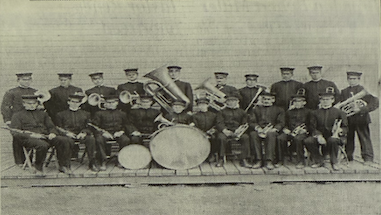Tai chi can improve your life
Published 12:00 am Wednesday, June 14, 2017

- Gaudette
Honestly, exercise isn’t exercise for me unless it is dancing to music.
OK, I do other things but this is what speaks to my heart. A few years back I was presented with the opportunity to learn (a simplified form of) tai chi called Movement for Better Balance. I originally looked at it as a paid weekend away, but quickly realized just how extraordinary this ancient method of exercise is.
Without delving into much of the lengthy history, the origins of what we know today as “t‘ai-chi ch‘üan” (tai chi), its lineage can be traced back to a Taoist monk in the 12th century. There are now five different styles of tai chi named after the originating Chinese family, with the earliest verifiable year of origination as 1580. The family styles share the underlying ancient theory but with a differing training technique.
Tai chi is a series of individual movements or forms that flow smoothly from one to another combining movement, mindfulness, breath and meditation to improve endurance, strength and balance. Much of the physical movement of tai chi is the use of leverage through the joints, using relaxation and coordination rather than muscle tension. This very aspect of tai chi is what intrigued me the most.
I was very surprised how much I felt this seemingly simple, slow exercise was. The use of the joint through its natural range of motion is easy and fluid. Paired with the mind-body benefit of concentration and meditation, the movements were powerful. Needless to say, I was impressed and brought the simplified fitness version focusing on better balance to the students I instructed. The results and enjoyment of the participants was amazing, so much a tai chi instructor was hired to develop advanced programming.
Most studies highlight positive benefits of tai chi practice for the elderly — reduction in falls, improved mobility, cognitive health, functional ability, independence and overall quality of life. Tai chi has proven useful as a drug-free approach for the management of anxiety and post-traumatic stress disorder, by offering a centered approach to quieting the mind with integrated body movements.
Key findings of a study on tai chi practice and patients with heart disease, done at Shanghai University showed reductions in systolic and diastolic blood pressure, and a decrease in HDL cholesterol and decrease in triglyceride counts. Participants also reported an improved quality of life and less depression. A large study done by the Arthritis Foundation, which sponsors a tai chi program, reports that people with arthritis experience pain relief and improvement in fatigue, stiffness and well-being by practicing tai chi twice a week. Ongoing practice of tai chi has also been shown to benefit persons with fibromyalgia and chronic pain by reducing pain and improving sleep.
Ai chi is a form of aquatic exercise and therapy that utilizes the theories of tai chi combined with the resistive and supportive environment of the water. Ai chi is based in tai chi and qigong: The movements progress from static and symmetrical exercises to continuously shifting the center of gravity and utilizing asymmetry in all planes of movement.
We are fortunate here to have a very well-known and active tai chi community in Bend. Mainstream, you will find tai chi in fusion classes at local fitness facilities. Our senior center in Redmond offers tai chi, and it is discoverable on TV, of course. Ai chi is offered in Bend, and we hope to have it on our schedule at the Cascade Swim Center in the fall.
Young to old, everyone can benefit from this ancient art form that combines mindfulness with amazing movement sequences, ultimately influencing the entire body.
— Robin Gaudette is the aquatics wellness coordinator at the Redmond Area Park and Recreation District. Contact her at robin.gaudette@raprd.org.






